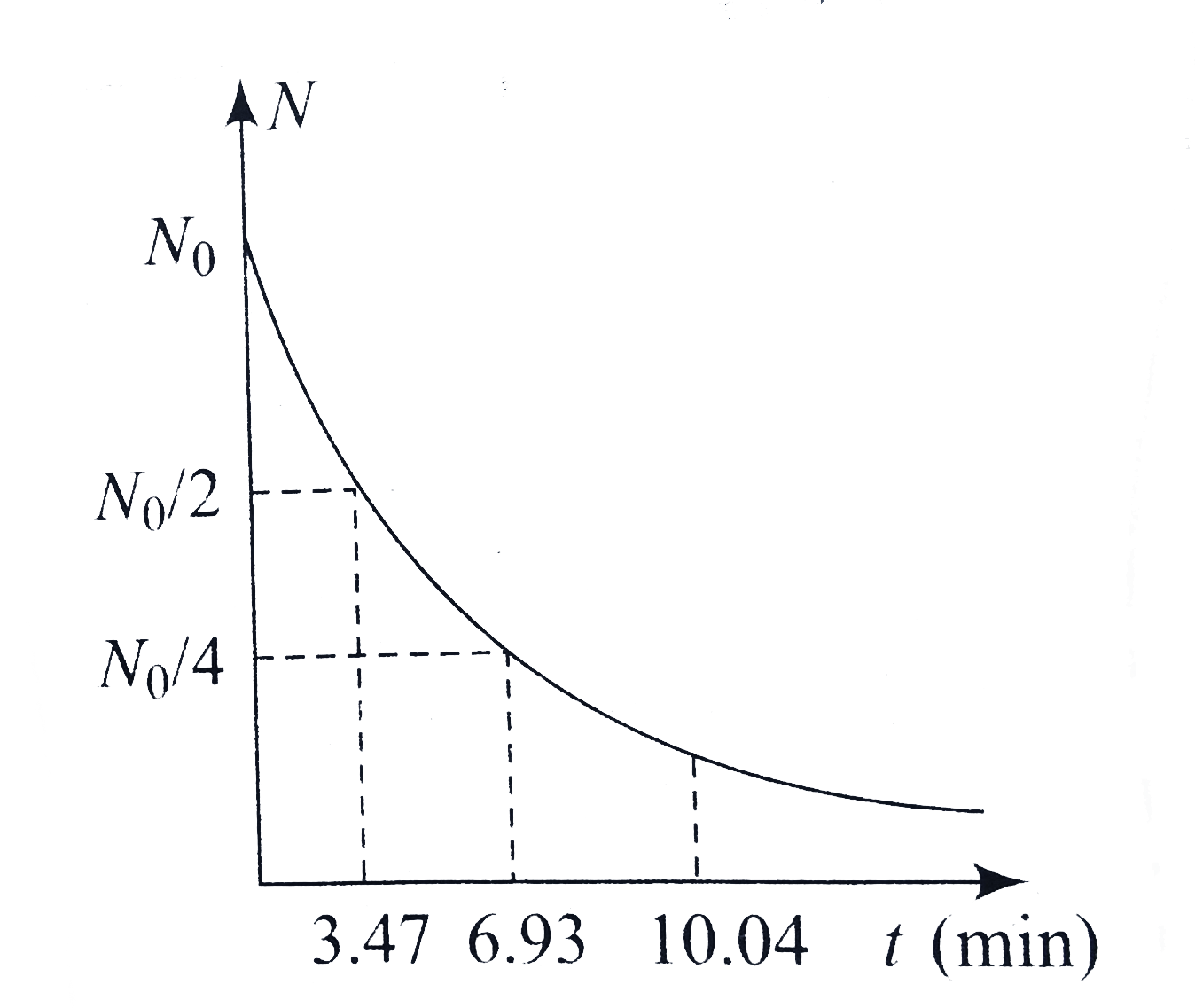An observer in a laboratory starts with N0 nuclei of a radioactive sample and keeps on observing the number (N) of leftover nuclei at regular intervals of 10 minutes each. She prepares the following table on the basis of her observation.

Use this data to plot a graph of loge(N0/N) vs time (t) and calculate the
(a) decay constant
(b) half-life of the given sample.
The graph between loge(N0/N) and time t is plotted as below:

(a) We know that
logeN0N=λt
⇒λ=1tlogeN0N
When t = 10 min.
loge(N0N)=3.465 (from graph)
∴λ=110×3.465=0.3465−1min
(b) Half-life,
T1/2=0.693λ=0.6930.3465=2 minutes.
Topper's Solved these Questions
- NUCLEIBOOK - MODERN PUBLICATIONCHAPTER - NUCLEIEXERCISE - PRACTICE PROBLEMS
38 Videos
- NUCLEIBOOK - MODERN PUBLICATIONCHAPTER - NUCLEIEXERCISE - CONCEPTUAL QUESTIONS
31 Videos
- MOVING CHARGES AND MAGNETISMBOOK - MODERN PUBLICATIONCHAPTER - MOVING CHARGES AND MAGNETISMEXERCISE - CHAPTER PRACTICE TEST
13 Videos
- RAY OPTICS AND OPTICAL INSTRUMENTSBOOK - MODERN PUBLICATIONCHAPTER - RAY OPTICS AND OPTICAL INSTRUMENTSEXERCISE - CHAPTER PRACTICE TEST
14 Videos
Similar Questions
A radioactive sample having N nuclei has activity R. Write down an expression for its half life in terms of R and N.
View SolutionDerive the law of radioactive decay on the basis of the fact that the decay probability for a nucleus is independent of the number of nuclei and is proportional to the period of observation.
View Solution
Knowledge Check
A radioactive sample has initial concentration N0 of nuclei. Then,
Athe number of undecayed nuclei present in the sample decays exponentially with timeBthe activity (R ) of the sample at any instant is directly proportional to the number of undecayed nuclei present in the sample at that tiemCthe number of decayed nuclei grows exponentially with timeDthe number of decayed nuclei grows lineraly with timeFor a radioactive sample, at given instant, number of active nuclei is N and its decay constant is λ then the incorrect relation is–
ANλ = activity at given instantBλ= decay probability per unit time of nucleusCAfter the next 1λ time interval active nuclei in the sample will be N(1−1e)DThe half life of the sample =ln2λIf N0 is the number of radioactive nuclei initially present , then the number of nuclei remaining undecayed at the end of nth half life is
A2−nN0B2−nN0C2−nN0D2−nN0
Four thousand active nuclei of a radioactive material are present at t=0. After 60 minutes 500 active nuclei are left in the sample. The decay constant of the sample is
View SolutionA radioactive sample undergoes decay as per the following gragp. At timet=0, the number of undecayed nuclei is N0. Calculate the number of nuclei left after 1h.
 .
.
View SolutionThe half life of a radioactive substance is T0. At t=0,the number of active nuclei are N0. Select the correct alternative.
View SolutionThe activity of a radioactive sample is measures as N0 counts per minute at t=0 and N0/e counts per minute at t=5min. The time (in minute) at which the activity reduces to half its value is.
View SolutionThe rate of decay (R) of nuclei in a radioactive sample is plotted against time (t). Which of the following best represents the resulting curve ?
View Solution
